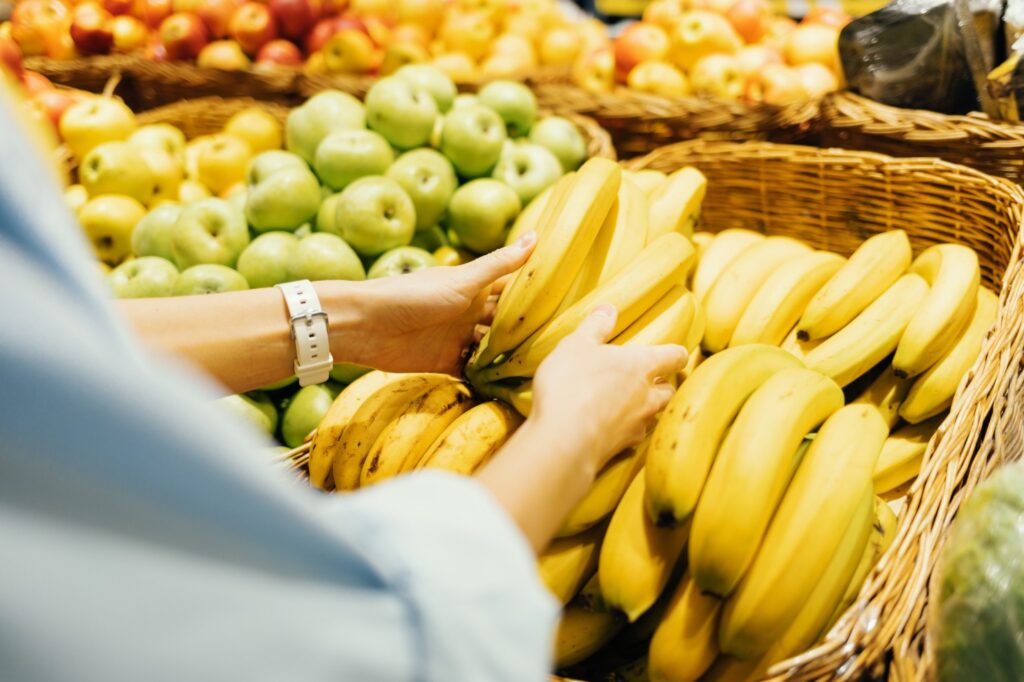Banana Logistics – 9000km to your Basket
6th August 2025

Bananas – the most popular fruit in European supermarkets – often travel over 9,000 kilometers and spend nearly a month in transit before reaching our shelves. To arrive fresh, ripe, and affordable, they rely on tightly controlled logistics from farm to store.
From ripening chambers in Rotterdam to refrigerated containers crossing the Atlantic, Girteka Logistics experts explain what it takes to bring exotic fruits like bananas and avocados to tables across Europe.
How Long Does It Take for Bananas to Reach the Stores in Europe?
The time it takes for fruit to reach Europe depends largely on its country of origin. Oranges grown in Spain may arrive in neighbouring markets within a week or even less. But for bananas and avocados sourced from Central or South America, the journey can stretch up to 30 days. Shipments from Asia take even longer — up to a month and a half.
According to Vytautas Oleškevičius, Central European Regional Manager at Girteka, each fruit’s journey involves numerous steps and players along the way. “Avocados are a great example,” he says. “Europe consumes over 1.1 million tonnes of avocados each year. They’re typically grown on small farms, where the growers sell them to exporters. The exporters wash and prepare them for sale, then importers handle logistics to bring the fruit to Europe. Only after all customs procedures are completed do European resellers step in, buying the needed quantities and asking us to transport them.”
Exotic fruits aren’t the only items crossing continents. If you take a closer look at product labels, you’ll find that even vegetables such as carrots, cucumbers, or potatoes can be imported from outside the EU. What may be more surprising is the scale of fruit logistics – in 2024 alone, Girteka transported over 7,000 tons of watermelons across Europe — the equivalent of more than 300 fully loaded trucks.
Keeping Fruit Fresh Across Continents
The journey of bananas from South America to store shelves in Europe requires highly coordinated work involving farmers, suppliers, and logistics companies. Girteka has already delivered over 14,000 truckloads of fruit to 30 European countries this year — more than 300,000 tons. The challenge is not just distance, but maintaining exact transport conditions. Even minor temperature changes can affect fruit quality.

“Our job is to assess and manage all potential risks,” says V. Oleškevičius. “For example, there’s always the risk of pallets or boxes being damaged at some transfer point. Customs inspections must also be considered, and some delays are out of our control. Containers sometimes have to wait three or four days due to heavy traffic. We call these the ‘known unknowns.’ Identifying them helps us address the challenges more effectively.”
It starts in Rotterdam
Most exotic fruit arrives at Rotterdam — Europe’s largest port, handling 400 million tons of cargo annually. Here, companies like Girteka take over. Fruits are sent to logistics centres and loaded onto refrigerated trucks driven across the continent. Even before this, the fruits are already being prepared for the final consumer. On ships, they are kept in containers with temperatures close to zero degrees Celsius.
“Bananas are usually cut while still completely green — totally inedible at that stage,” – says Mantas Briedis, a sales manager at Girteka Logistics. “They must remain unripe throughout the Atlantic journey, or they’d spoil before reaching Lithuania. In Rotterdam, importers place them in ripening chambers. The ripening process continues in the truck, and by the time the truck reaches the stores, the bananas are almost fully ripe.”
What’s Easy vs. What’s Difficult to Transport?
According to experts, the complexity of the process depends on the type of fruit. Fruits vary significantly in sensitivity. Bananas and avocados are relatively easy to transport, which explains their global popularity. Berries, on the other hand, are much more delicate and require highly responsible logistics operations.
“One of the products we transport from Peru is blueberries,” M. Briedis explains. “They’re very delicate, so maintaining the right temperature is an added challenge we take seriously. Because berries spoil faster, they are often flown to Europe rather than shipped. Citrus fruits are also tricky — they’re highly sensitive to condensation. If moisture builds up, the fruit starts to rot.”
In such cases, speed and precision become critical. Drivers play an essential role, ensuring temperature-sensitive cargo is delivered as quickly and safely as possible to prevent spoilage and waste.
The Silent Success of Fruit Logistics
Despite the complexity and numerous risk factors, modern logistics chains operate with remarkable efficiency. Today, it’s almost unimaginable that a store in in any European country would run out of bananas. “The fact that consumers don’t even think about how exotic fruits reach them is the best proof of how smoothly the whole process works,” says Girteka’s logistics expert Mantas Briedis.
Behind every banana, avocado, or box of blueberries is a sophisticated network of farmers, exporters, customs brokers, logistics planners, and drivers working in sync. Their coordination ensures that even fruits grown thousands of kilometers away arrive ripe, fresh, and ready to eat — right when we expect them to.
Similar news

